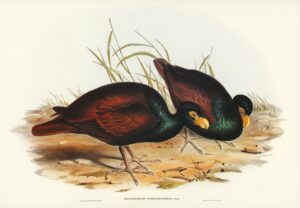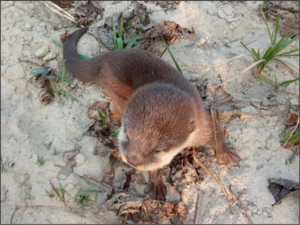Most of us think of worms as the writhing little creatures in our gardens. But there are plenty of species of worm out there, living in the deepest depths of the ocean, to sands and mudflats. Some come in much scarier forms. Here are some worms to fuel your nightmares.
Ribbon worms
When the video made waves in 2017, people swore it was fake. Some questioned whether it was from Earth.
But the video is real. It is a ribbon worm, a marine worm capable of becoming longer than a blue whale. They are usually red, orange, or yellow but can come in other bright colors. Jenna Moore from the Florida Museum describes them as “a little like living linguine noodles, they are often very beautiful, with bright colors or stripes.”
The worm in the video looks like it is in pieces. Unfortunately, this specimen is under extreme stress and has fragmented itself as a survival mechanism.
Naturalists have identified 1,300 species of ribbon worms. The species in the video is Gorgonorhynchus. Upon detecting prey (small fish, crabs, and mollusks), gorgonorhynchus shoots out its ‘proboscis’, formed by the worm circulating and compressing fluid inside its body.
All ribbon worms have proboscis of some kind and the web contains venom and digestive juices. It then drags its prey into its mouth and swallows it whole. It expands its body several times to accommodate the food.
Bobbit worms

Bobbit worm waiting for prey. Photo: Shutterstock
Bobbit worms hide in narrow burrowed holes in the sand on the ocean floor. They conceal themselves and stay perfectly still until unsuspecting prey swims into range. Once its antennae pick up the prey, the hobbit worm shoots out of the sand with a force of 22kmph, stunning its prey. The unfortunate prey gets dragged into the sand for dinner.
Bobbit worms eat fish, octopuses, and even algae. It is a very strong animal with a tough exoskeleton covered in spikes. It is capable of surviving even when sliced into pieces.
A study done by Yu-Yen Pan et al. states that “burrowing bobbit worms only extend a minor portion of their body outside of the sediment, observations on their behavior beneath the seafloor are difficult.” The longest bobbit worm on record extended 6m.
Remarkably for a creature so fearsome, it has no brain.
Blood worms
Blood worms are used as fishing bait but they are fearsome predators. Found in mudflats, blood worms get their name from their insides, which are dark red. The outside is a translucent pink.
Their bites do not hurt but are quite disturbing to watch. It shoots out its proboscis when hunting (or if threatened), swelling up its head, and releasing a gross, smelly green goo. The green goo is venom that will paralyze its prey.
Bristle worms

A species of bristle worm. Photo: Nagoya University
The picture above captures a newly discovered species of bristle worm from Japan. This worm should not be trifled with. According to Hannah Waters and Emily Frost in Smithsonian Magazine, bristle worms are resilient, ancient animals; the worms survived five mass extinction events and can live in 60°C water.
One species of bristle worm, called the Pompeii worm, lives directly on deep-sea hydrothermal vents. While not there is not much research into the new Japanese bristle worm, researchers observed that it exudes blue and purple bioluminescence.
Many have pointed out the worm’s resemblance to creatures from Japanese folklore. Could this creature have influenced these folk stories?
King ragworms

King ragworm. Photo: Alexander Semenov/Wikipedia Commons
This colorful, frilled worm is Alitta virens, or the king ragworm. They feed mostly on seaweed, small shrimps, and microscopic creatures, but they sure look intimidating.
They have the same feeding method as the bobbit worm, they shoot out and ensnare their prey in the blink of an eye. They have two pincer-like fangs at the front and back; yes, they have two heads!
King ragworms live in the mud or sand, have long antennae, and are covered head to toe in frills which help them to burrow. They can grow up to 120cm in length.
Because of their very colorful appearance, some deem them the most beautiful worms in the world.






